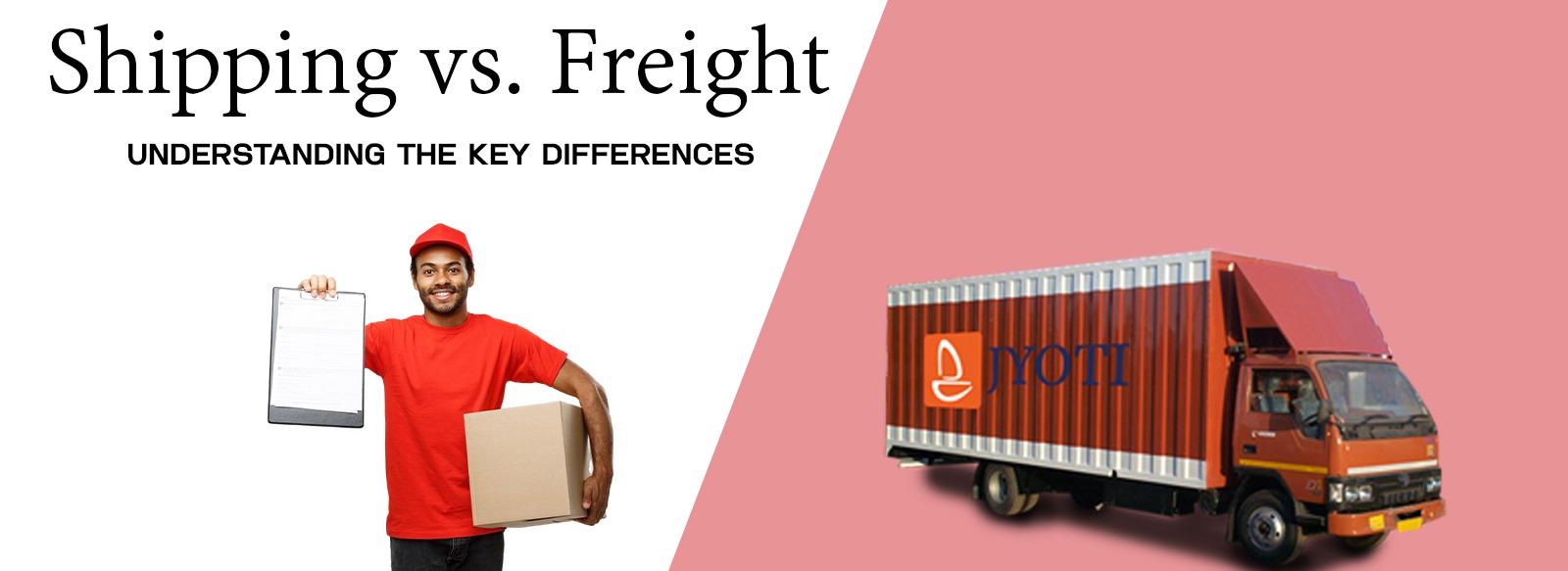Shipping vs. Freight: Understanding the Key Differences
When you’re dealing with logistics and transporting goods, you might come across two terms that are often used interchangeably—shipping and freight. They both involve moving goods from one place to another, but they aren’t exactly the same. It’s important to know the differences between these two, especially if you run a business or if you need to send something to someone. In this post, we’re going to break down what shipping and freight mean, how they differ, and which one you should use in various situations.
What is Shipping?
In simple terms, shipping means transporting goods from one place to another. This usually refers to smaller, lighter goods like packages, documents, or consumer products. Shipping can be done through different methods—by truck, train, ship, or airplane. The key thing about shipping is that it typically deals with individual items or smaller shipments, often for personal use or businesses that need to send out products to customers.
Think of shipping as what happens when you order something online, and it arrives at your door in a few days. It’s the service you use when sending a single package or a few packages.
Companies like FedEx, UPS, DHL, and your local postal service all offer shipping services, and they provide options ranging from regular deliveries to faster, express shipping for those who need their packages sooner.
What is Freight?
Freight, on the other hand, refers to the transportation of larger, bulkier, or heavier goods, often for commercial or industrial use. It’s the movement of goods in larger quantities that need more space and special handling. Freight can be transported by various modes, including trucks, ships, trains, and planes, just like shipping, but the key difference is in the size, weight, and purpose of the goods.
Freight is often used for businesses, manufacturers, or industries that need to move large quantities of products, raw materials, or heavy equipment. When you’re talking about freight, it’s usually about shipments that are far too large for regular shipping services.
Freight shipping can involve a lot more planning and coordination, and it often requires specialized services, such as freight forwarding, where a company helps manage the process of getting goods from one point to another.
Shipping vs. Freight: A Brief Comparison
To make things simpler, let’s compare shipping and freight side by side to highlight the differences:
| Aspect | Shipping | Freight |
|---|---|---|
| Definition | Moving smaller goods or parcels | Moving larger, bulkier goods in bulk for business |
| Size of Goods | Small or medium-sized packages | Large, heavy loads |
| Mode of Transport | Can be by air, ground, or sea | Can be by truck, rail, sea, or air |
| Cost | Usually lower for small items | Higher, due to the larger size and bulkiness |
| Recipient | Individuals, businesses, or e-commerce customers | Large companies or industries |
| Frequency | More frequent, with options for faster delivery | Less frequent, typically for large shipments |
Shipping vs. Freight Cost Comparison
Now let’s look at how the costs of shipping and freight stack up. Several factors affect the price of each, including the size of the shipment, the distance it has to travel, and the delivery speed you need :
a) Size and Weight :
Shipping is often cheaper when you’re sending small or light packages. The cost depends on the size, weight, and destination of the item. If you’re mailing a single package that’s lightweight, it won’t cost much.
Freight costs are higher because freight deals with much larger and heavier shipments. Think about shipping pallets, containers, or machinery. These shipments require larger vehicles like cargo trucks, ships, or even planes, which means it costs more.
b) Shipping Method :
Shipping can be done through postal services or courier companies like UPS or FedEx. The costs vary depending on whether you choose standard shipping or express delivery, but it tends to be cheaper for smaller packages.
Freight shipping involves moving large amounts of goods, so the shipping method plays a big role in determining the cost. Air freight tends to be the most expensive because it’s fast and requires specialized equipment, while sea freight is cheaper but slower.
c) Distance and Delivery Time :
For shipping, the cost increases with distance, but you have a lot of options, from local deliveries to international shipping. If you need something urgently, express services will cost more.
Freight is more complex. Distance matters, but freight is usually international or involves long-haul travel, so you’ll also have to consider things like customs fees, taxes, and the type of cargo being moved.
d) Volume of Goods :
When you’re shipping a lot of individual items, there might be discounts, especially if you're a business ordering in bulk. But shipping each package separately usually costs more.
With freight, the larger the shipment, the more cost-effective it becomes per unit. Shipping several pallets or containers at once is generally cheaper than sending one small box at a time.
Is Freight a Type of Shipping?
Yes, freight is actually a specific type of shipping, but not all shipping is freight. Freight is the movement of large, heavy, or bulk shipments that are typically used for commercial purposes. Shipping is a more general term that includes everything from small packages you send through the mail to large shipments that require special handling.
In other words, while all freight is shipping, not all shipping is freight. Freight requires special logistics, equipment, and handling, especially when the goods are much larger or need to be transported over long distances. Shipping, however, can involve smaller packages that don’t need those extra services.
When to Use Shipping vs. Freight?
Choosing between shipping and freight depends on the size of the item you're sending and the purpose behind it. Here’s a guide to help you decide when to use each term:
a) Use “Shipping” when :
You’re sending small packages or individual items.
It’s a personal item or a single product from your business.
You’re using a courier or postal service to deliver something directly to a customer or recipient.
b) Use “Freight” when :
You’re dealing with large, heavy items or bulk goods.
The items are for business use, such as raw materials, machinery, or large quantities of products.
You’re using specialized services to transport goods, such as freight forwarding or cargo shipping.
Conclusion
In conclusion, understanding the difference between shipping and freight is crucial for businesses, e-commerce owners, and anyone involved in the transport of goods. While both terms relate to the process of moving items from one place to another, they apply to different kinds of goods and different kinds of transportation.
Shipping is typically used for smaller, lighter shipments that individuals or businesses send through standard courier services. On the other hand, freight refers to larger, bulkier shipments meant for businesses and industries. It often involves more complex logistics, higher costs, and longer distances.
By knowing when and how to use these terms, you can ensure that you’re choosing the right method for your needs, whether you're a business shipping products to customers or managing large-scale commercial shipments.



